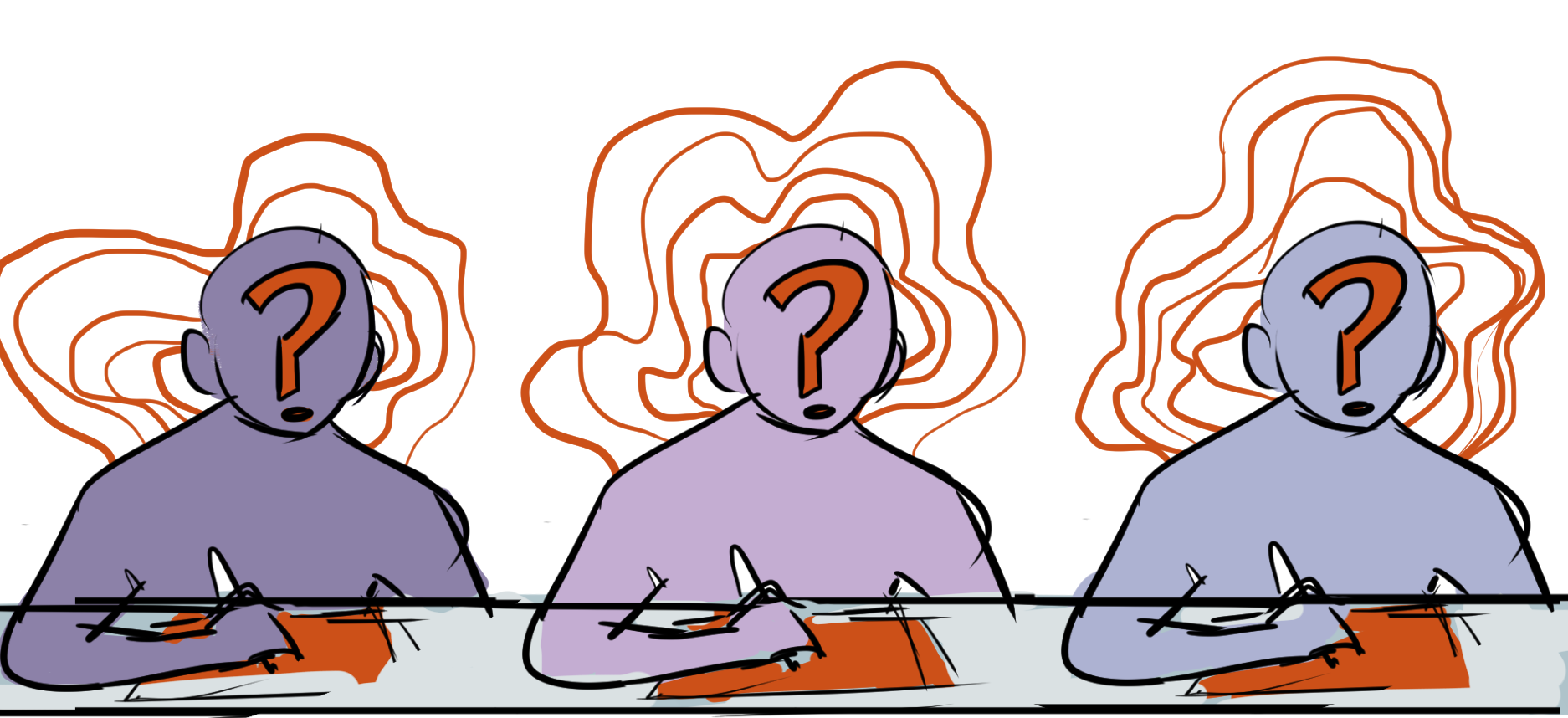I dread going to math class. I really do. I dread it more than opening Infinite Campus after a bad test or waking up to my morning alarm. My dread intensifies as I listen to the teacher’s lecture and stare at the incoherent string of x’s and y’s.
This is not a unique experience. Many students I have talked to have similar views. Palo Alto High School, as a school in the heart of the Silicon Valley, has developed a reputation for being exceptionally strong in teaching STEM subjects. But for some students, myself included, Paly’s pride in its strong STEM program translates into frustration rather than effective learning.
For the past couple of years, I have struggled immensely in math. Not because it was boring or I wasn’t interested in the subject, but because as an artist and a writer, logic-based subjects like math are not easy for me. Requests for help have often gone unanswered, and I’ve been redirected to outside tutors when my teacher didn’t have the time to meet with me.
In my experience, teachers at Paly, specifically in the Math Department, often target the top students and help them to succeed, while they expect the remaining students to rise to the occasion. I have seen that those who don’t have a natural inclination toward math tend to fall behind with this structure.
“I have seen that those who don’t have a natural inclination toward math tend to fall behind with this structure.”
An example of this is the American Math Competition, a contest offered annually that tests problem-solving skills. If they do well, students can qualify for a statewide competition. Although students in lower levels can opt to take the test, the advanced students are required to participate. Though it’s a small case, this imbalance reflects the math culture at Paly, where top students are generally pushed to excel further, while lower-level students aren’t encouraged to strengthen their skills as extensively as their more advanced peers. (Although I personally would not want to take the test, there are some who might want the chance. On the other hand, there are some advanced students who, like me, don’t want to take the AMC and are unhappy with being required to do so.)
The question still persists as to why this culture is perpetuated. Paly is a competitive school where students are constantly comparing themselves to one another. This competition is further heightened in math classes because there is only one right answer for any one problem. Unlike the humanities or art departments, which are more subjective in grading, math classes are based heavily on answering test questions exactly. It doesn’t always make sense, I know, but I feel that these scores not only represent the student in the eyes of fellow students and teachers, but also affect their view of themselves. Students’ hard work often does not manifest in their scores, and this sentiment might discourage students in lower-lane math classes.
While it isn’t plausible that every student will get 100 percent, students should be able to succeed without so much competition and pressure.
The fundamental problem is that students are unable to gain the assistance that they need to rise to Paly’s exceptional standards.
Arne Lim, instructional leader of the Math Department assures that teachers are making strides in figuring out how to support students individually by using techniques such as sectioning tests into easier-to-take units, offering retakes, and taking the time to check in with students who may be struggling.
The Math Department is implementing these changes with Lim’s “restart” class.
“For the students who messed up first semester, got a D or an F, but it’s really important to them to keep on time then they can do first semester again,” Lim says.
There are only 19 students in this class, supported by two teachers so that students get the attention they need. If the personal teaching styles used in this class were used in regular or advanced lanes, students might have a better handle on how to improve their grades and succeed in math classes.
Most of all, students need to feel supported so they are able to succeed. Teachers need to look out for the students who require a little help, especially if they ask. They should learn not to miss the signs of a struggling student.





